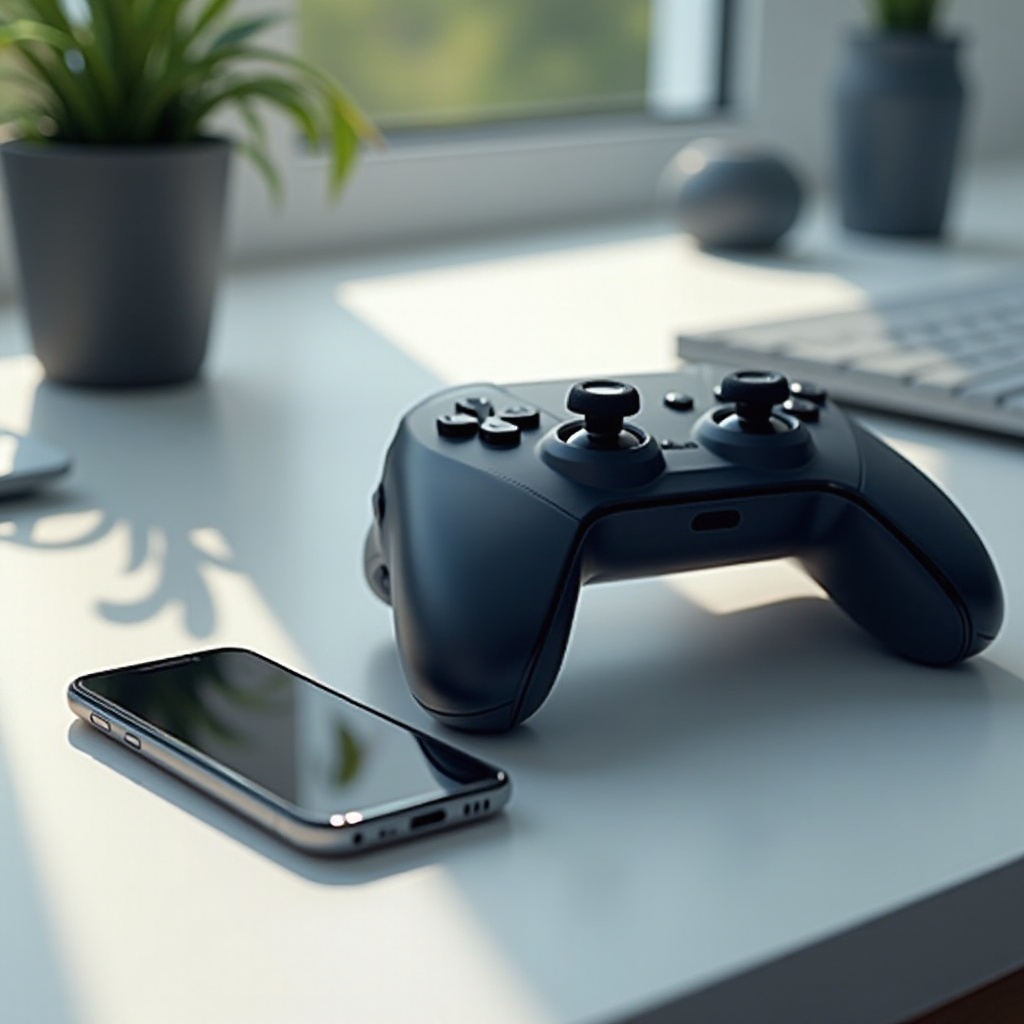Introduction
Experiencing delays when connecting a controller to an iPhone can be quite disruptive, especially for avid gamers who depend on swift response times. When a controller doesn’t sync seamlessly with an iPhone, it can detract from the overall gaming experience. Addressing these delays is key to ensuring smooth gameplay. This all-encompassing guide will cover the typical reasons for delay, how to accurately identify them, and both basic and advanced steps to resolve any issues. Let’s delve into how to restore quick and effective control between your controller and iPhone.

Understanding Controller Delay
During gaming, a controller delay means a noticeable lag between pressing buttons and the on-screen response. Such lag can break immersion, making rapid maneuvers challenging. This delay often stems from breakdowns in communication between the controller and the iPhone. Recognizing symptoms like sluggish character actions is vital for tackling these issues head-on. First, it’s essential to understand what causes these interruptions.
Common Causes of Controller Delay
Several reasons account for these delays:
-
Bluetooth Interference: Many homes are brimming with wireless technology, which can disrupt your controller’s connection.
-
Battery Level: Ensuring your controller is well-charged is important since low battery levels can lead to lag.
-
Device Compatibility: Older or non-supported controller models might face connectivity hurdles with iPhones.
-
Software Versions: Outdated software in either the controller or the iPhone can further increase latency.
By narrowing down these culprits, you can more effectively resolve connectivity challenges.

Identifying the Source of Delay
Pinpointing pinpoint the exact cause of delay can be approached by several methods:
-
Changing Location: If the current environment is dense with Bluetooth signals, relocating might help.
-
Checking Battery Levels: A full recharge can reveal if the battery is the issue.
-
Testing Different Controllers: Substituting with another compatible controller can test for device-specific issues.
-
Software Verification: Keeping your devices updated can assure both the iPhone and controller are communicating effectively.
Utilizing these methods helps focus the scope of potential issues and eases the troubleshooting process.
Basic Troubleshooting Steps
Start by examining these basic remedies for delay:
-
Reset Bluetooth Connection: Turn Bluetooth off and on to refresh connections.
-
Restart Devices: Give both devices a reboot to clear any temporary errors.
-
Reduce Nearby Bluetooth Devices: Deactivate other Bluetooth-enabled devices crowding the vicinity.
-
Re-pair Controller: Sever and restore the Bluetooth link between the controller and iPhone.
-
Consult iPhone’s Manual: Your iPhone’s user manual might offer specific troubleshooting guidelines.
These straightforward strategies can often correct delay issues and pave the way for more advanced solutions if they persist.

Advanced Solutions for Reducing Delay
Should basic troubleshooting falter, explore these advanced methods:
-
Update Controller Firmware: Manufacturer updates can correct compatibility issues and improve connectivity.
-
Network Adjustments: Tweak Wi-Fi settings, moving between 2.4 GHz and 5 GHz bands, to assess if they impact Bluetooth performance.
-
Remove Wi-Fi Saturation: Disconnect non-essential Wi-Fi gadgets that may be clogging up bandwidth.
-
Professional Consultation: If issues persist, seeking out professional advice could disclose intricate device faults.
-
Hardware Inspection: Investigate for physical damage which might compromise the controller’s efficacy.
Addressing these strategies usually helps solve more severe latency problems.
The Role of Software and Hardware Updates
Keeping current with software and hardware upgrades is integral for optimal performance. Updates often carry necessary bug fixes and enhancements, reducing any potential delays. Regularly checking for updates from both controller and iPhone manufacturers can significantly reduce communication issues. If recurring issues persist despite these measures, consider investing in a newer, compatible controller model.
Conclusion
Controller delays on iPhones can be aggravating, affecting the satisfaction of your gaming session. By grasping their causes and applying recommended solutions, these delays can be avoided or eradicated effectively. Staying updated and being aware of your device’s optimization techniques will help maintain smooth and responsive control.
Frequently Asked Questions
Why does my controller have a delay when connected to my iPhone?
Controller delay often results from Bluetooth interference, low battery, outdated software, or incompatible devices. Address these aspects for improved performance.
Can Wi-Fi affect Bluetooth controller performance on iPhone?
Yes, Wi-Fi can cause signal interference, especially when sharing the same 2.4 GHz band. Adjusting router settings or reducing device connections can help.
What should I do if my controller still lags after troubleshooting?
Consider advanced solutions like firmware updates, network adjustments, or consulting with professionals if basic troubleshooting does not resolve the delay.